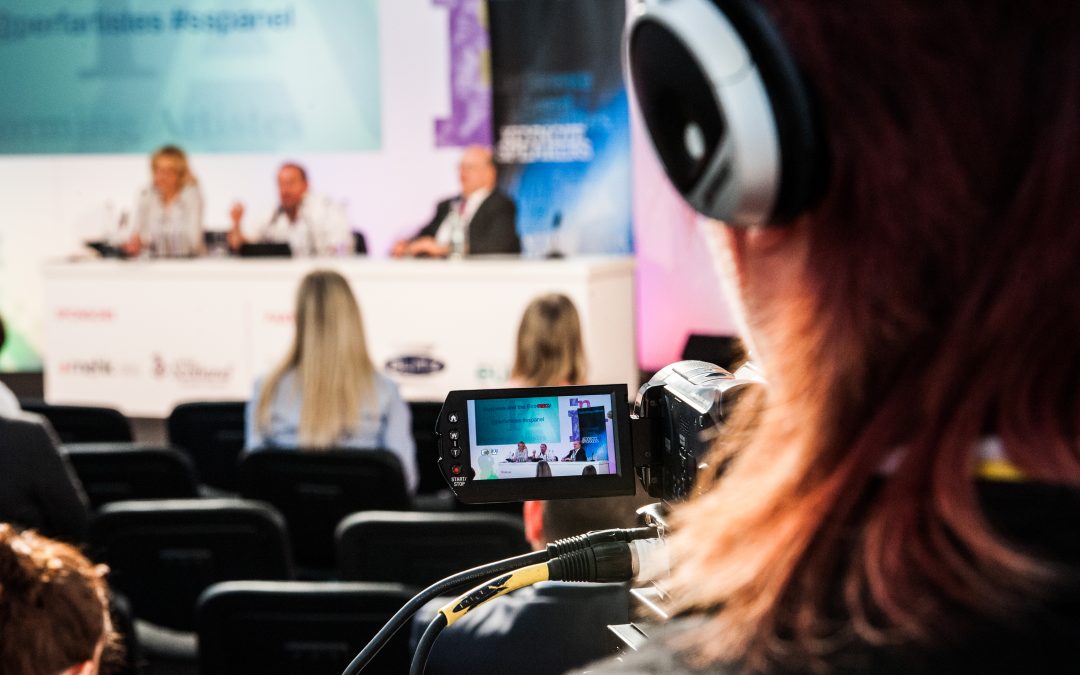Keynote speakers, many of whom made a living out of telling people to adapt or die, have been urging people to pivot to digital, and flagging up their particularly online offerings in the process.
Similarly, many clients have moved from physical to virtual formats, however both need to think seriously about the production values of their presentations, and the overall user experience. Let’s think in physical event terms:
We have all spent hours on Zoom calls over the last few months, and they are the equivalent of hiring a board room at a venue or hotel. You’ve got a table and chairs, perhaps a flip chart and plasma screen. For the purposes of bringing a group of people together to discuss certain issues, it’s perfect, but an Event, it is not. At an Event, you would have professional staging, sound, lighting, you may well have a production company running it, creating stings and graphics. It looks and feels professional and slick, creating the right impact for the audience, be they staff who have to attend, or paying delegates.
Virtual events demand those same production values, and doubly so if your event is a revenue centre attracting sponsorship and paid attendees.
Hopefully we all know to have clear backdrops and proper lighting, but in the case of professional speakers they need to invest in professional lighting, camera and mic. For virtual, you are your own AV person! For organisers, an easy win to recreate the identity of a physical event is to get some printed backdrops which contributors can use. Little more than printed card, they will hide a multitude of sins behind the speaker, while projecting a unified brand to the audience…and no, the electronic Zoom backdrops just don’t cut it!
If you’re just using a basic platform like Zoom or Teams, spend time exploring the features so the audience experience is as focused as possible, and do have someone dedicated to run it whose not presenting. Like the original analogy, auto mode is fine for a simple meeting, but an Event demands more.
The more bespoke virtual meeting platforms of course have additional features built in, while production companies can offer a whole range of solutions which at the top end will make your event more akin to a TV programme, but with the added benefit of interaction that online offers, be they surveys, chat boxes and the like.
Virtual events are going to be a necessary reality for the next few months, but with the proper production values, brand and event integrity can be maintained and even enhanced. When physical events finally return, they will likely take a hybrid form with a combined physical and virtual audience, and these offer great opportunities to segment, tailor (and in the case of paid for events, further monetise) the user experience. Content will always be King, but production values are Queen!
Our final two webinars in the current series are this Thursday at 11am and next Tuesday at 10am. Tuesday will partly be a masterclass of what you can do on Zoom: https://www.performingartistes.co.uk/news-post/169



